2022 World Cup: 12 Reasons Qatar Deserve to Host It
Yoosof Farah@@YoosofFarah2022 World Cup: 12 Reasons Qatar Deserve to Host It

On the day the footballing world stood still to see where the greatest sporting tournament on earth is going to take place in the future, Qatar emerged victorious in their bid to host FIFA's flagship event in 2022.
The Middle East minnows beat sporting giants Australia and the U.S in their quest to land the tournament in their part of the world for the first time ever.
But amid the Qatari jubilation, worldwide media have been quick to condemn FIFA's decision and raise the serious question of corruption within the world football governing body's executive committee (the FIFA ExCo).
After all, it's not often a country with less developed infrastructure, a higher security risk and a more problematic climate than other bidders is chosen to host one of the greatest spectacles on earth.
However, the potential of a sport-changing legacy is clearly evident in Qatar, a country which boasts 12 venues that can revolutionize the world's most followed sport.
According to the bid's organizers, "All of the stadiums will harness the power of the sun's rays to provide a cool environment for players and fans by converting solar energy into electricity that will then be used to cool both fans and players.
"When games are not taking place, the solar installations at the stadiums will export energy onto the power grid. During matches, the stadiums will draw energy from the grid. This is the basis for the stadiums’ carbon-neutrality."
Also, the upper tier of nine stadiums will be removed after the tournament, sent to developing nations "which often lack sufficient football infrastructure, as doing so will allow for the further development of football on the global stage."
The bid organizers also added, "Along with the stadiums, we plan to make the cooling technologies we have developed available to other countries in hot climates, so that they too can host major sporting events."
Qatar University Stadium (43,500 capacity)

With intricate golden patterns to reflect the true beauty and extravagance of Arabian culture, the Qatar University Stadium, based on the outskirts of capital city Doha, has the chance to revolutionize varsity sport in the country.
Based on campus, it will replace the current track and field arena, and will be used by students after the tournament for both athletics and football, with a permanent capacity of 23,500.
A truly modern stadium with world-class facilities capable of hosting the demands of football's most elite players will give student athletes the perfect platform to fulfil their potential.
Following the tournament, the upper tier of the stadium will be de-constructed and sent to an underdeveloped football nation to help improve their sporting infrastructure.
Al Rayyan Stadium (44,740 capacity)

A multi-purpose stadium in the landlocked municipality of Al Rayyan, this venue has the potential to literally change the face of all future sporting stadia.
It will be designed with a special "media membrane" facade that acts as a screen for projecting news, updates and current matches.
Fans who can't get tickets for matches will still be able to soak up the pre-match and post-match atmosphere, hear the roar of the crowd and actually watch the game at the stadium, with the added benefit of seeing replays and different camera angles, etc.
This is a project which could completely revolutionize and enhance the experience of fan parks.
Al-Gharafa Stadium (45,000 capacity)
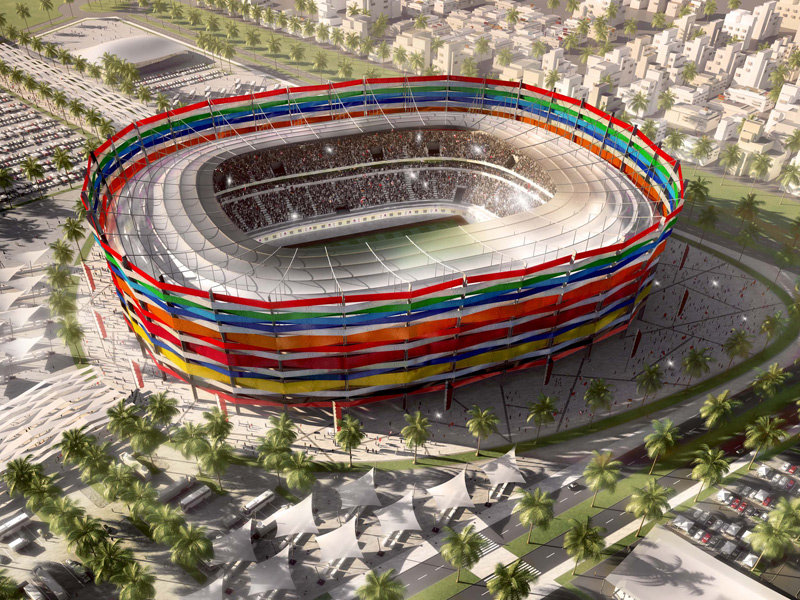
A host stadium for the 2011 AFC Asian Cup, which is of course to be held in Qatar, the Al-Gharafa stadium could also change the face of future sporting stadia.
It's exterior will be made up of ribbons representing the nations that qualify for the 2022 FIFA World Cup and, according to the bid organizers, will symbolize football and the mutual friendship, tolerance and respect that the tournament represents.
Education City Stadium (45,350 capacity)

Glittering by day and glowing by night, this stunning stadium will also add to tournament's legacy in helping varsity sport.
It will be located in the midst of several university campuses at Education City (14 square km of educational facilities, from school age to branch campuses of "some of the world's leading universities"), easily accessible for fans both in Qatar and in neighbouring Bahrain, which will be only 51 minutes away from the stadium by high-speed rail.
Following the World Cup, the stadium will retain the lower tier (25,000 seats) to be used by university athletic teams.
Doha Port Stadium (44,950 capacity)
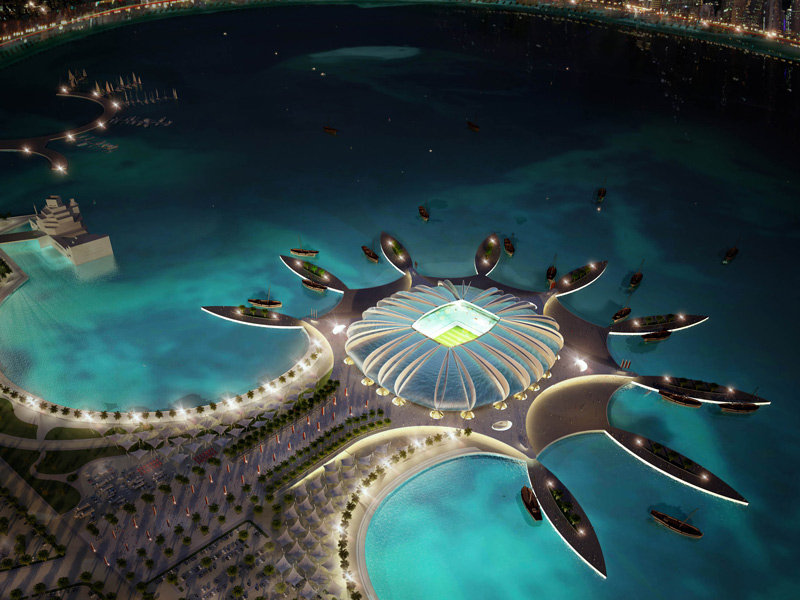
The Doha Port stadium could possibly be the first ever football venue to embrace the power of water.
The stadium, to be built specially for the World Cup, will sit on an artificial peninsula in the Persian Gulf, designed to evoke the marine setting it will be encapsulated in.
Water from the Gulf will run over the stadium's outer facade, contributing to this revolutionary cooling process Qatar have going for all its World Cup stadia, as well as adding to its visual allure.
Amongst other means of transport, fans can also access this stadium by ferry or "water taxis".
Umm Salal Stadium (45,120 capacity)
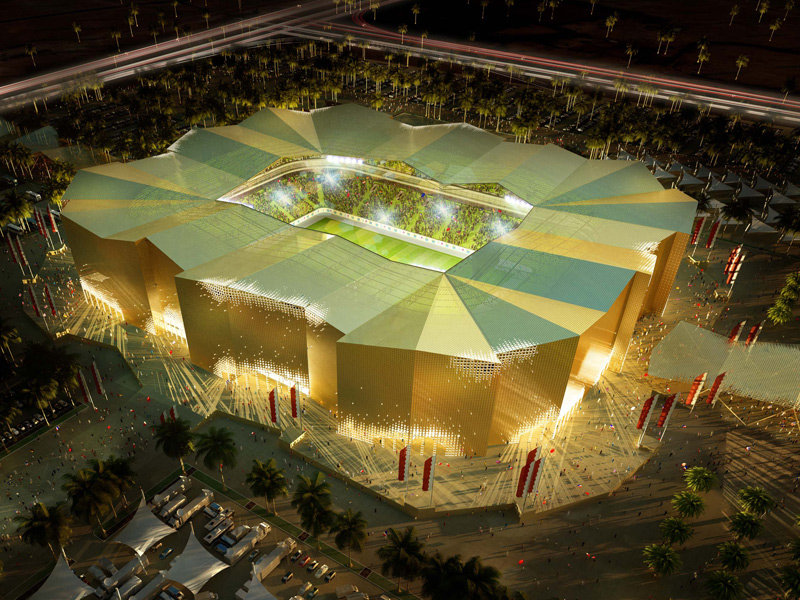
Simply put, this stadium will be a masterpiece in sporting architectural art.
It is designed to depict traditional Arabian forts, showcasing Qatar's cultural beauty to the world.
This innovative stadium could revolutionise the way in which future stadia is designed.
Al Wakrah Stadium (45,120 capacity)
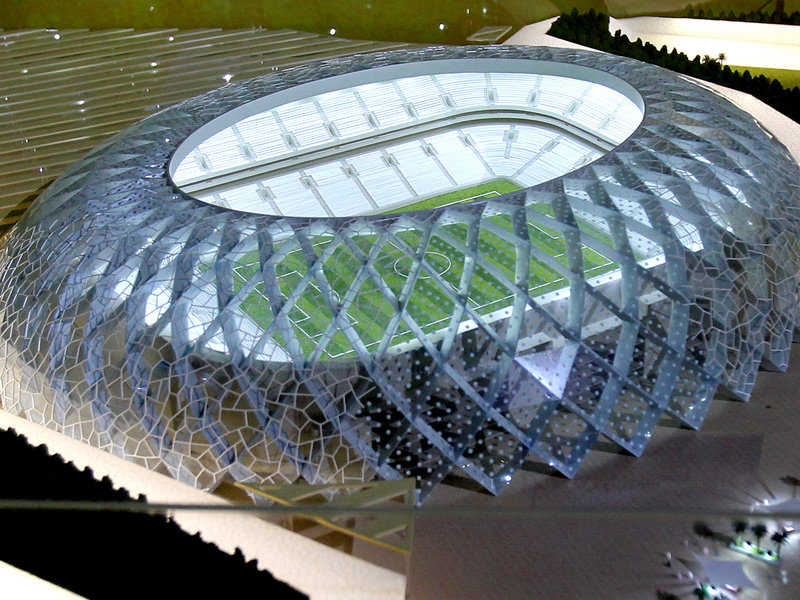
This architectural beauty is another to transform it's surroundings into a world class skycraper of a sporting facility.
The stadium is to be set up with a clear blue colour and curved exterior with marine pearl patterns, reflecting the city of Al-Wakrah, one of Qatar's oldest cities, which has a long history of commercial fishing and pearl diving.
Al-Wakrah stadium takes its cues from the sea that has played such an important role in the city's history.
Al Shamal Stadium (45,330 capacity)

With a highly innovative design based on traditional dhow fishing boats, this stadium epitomises how Qatar is planning to use the World Cup to show and invite the world into its culture.
And to please FIFA officials, it's also a very easily accessible venue, with spectators able to arrive via the Doha Expressway, the Qatar-Bahrain Friendship Bridge, water taxis and metrorail.
Al Khor Stadium (45,330 capacity)

Sitting in their seats inside this sea-shell designed stadium, spectators will be treated to "stunning" views of the Persian Gulf.
That alone makes this another breathtaking marvel Qatar is able to conjure up, making Qatar 2022 potentially a World Cup like no other in history.
Sports City Stadium (47,560 capacity)
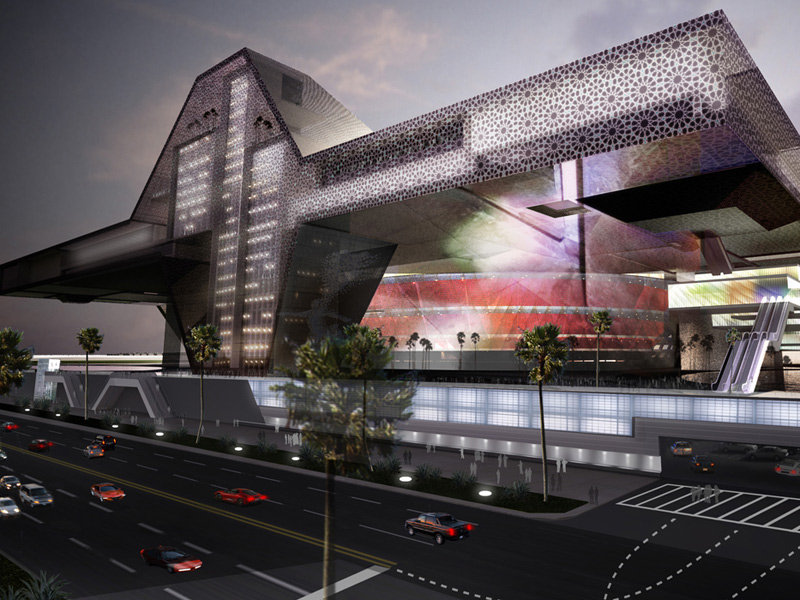
Here is what the bid organisers said about this beauty.
"Drawing inspiration from traditional Arab tents, Sports City Stadium will have 47,560 seats. A retractable roof, partly retractable pitch and retractable stands will make the stadium Qatar's premiere multi-use facility in the decades following the 2022 FIFA World Cup.
"The stadiums innovative features will make it an ideal venue for football matches, but also concerts, theatre performances and non-football related athletic events."
Kudos to any reader who can identify any other other football stadium in the world which can do all that.
Khalifa International Stadium (68,030 capacity)
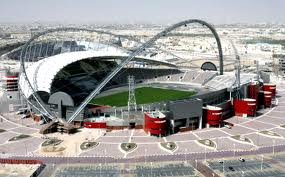
A world class venue which will host the 2011 AFC Asian Cup final and in the past has hosted a friendly between England and Brazil amongst other major events, the Khalifa International Stadium is Qatar's living example that stunning stadia can easily and most definitely be built in the country.
It will be upgraded from 50,000 seats to 68,030 for the World Cup, and will promote the country's growing reputation for producing sporting talent, being the centrepiece of the Aspire Academy for Sports Excellence.
Lusail Iconic Stadium (86,250 capacity)
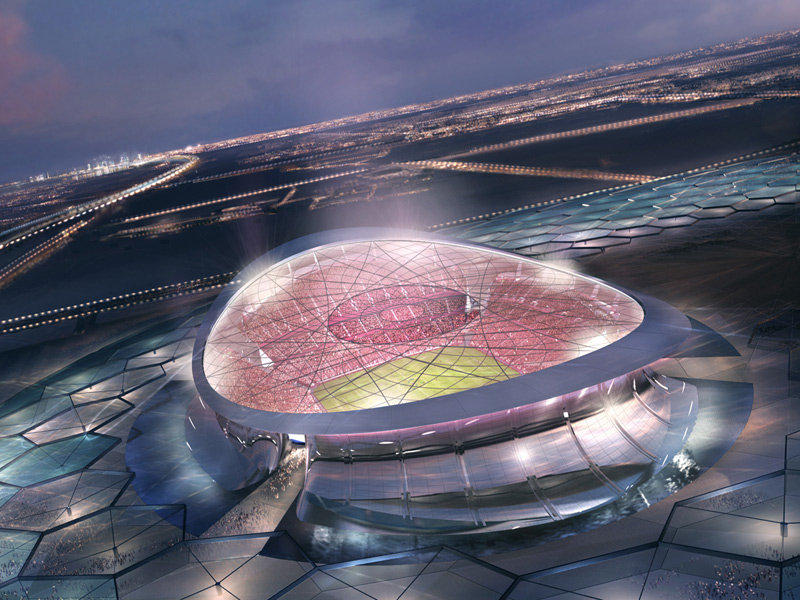
A keeper for Qatar, this showpiece stunner will host the opener and the final of the World Cup, amongst other matches.
The sail of a dhow boat is the inspiration for the stadium's design, with the venue embracing the water, being completely surrounded by it.
Following the World Cup, it will be used to host other "spectacular sporting and cultural events."
Click here to see what the stadium will be like in all its glory.
As You Arrive to Watch the 2022 FIFA World Cup Final...

This will be a fan's view when walking up to watch the biggest sporting encounter in the world.
It is undeniably a truly sensational sight.